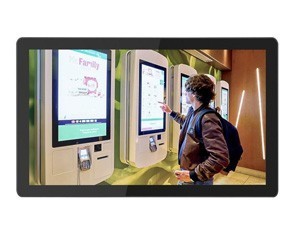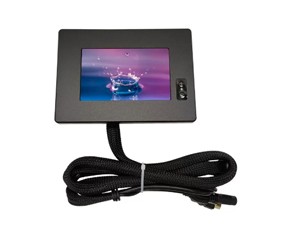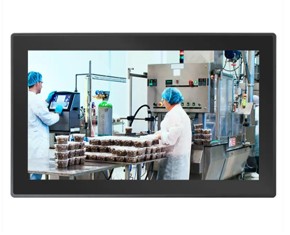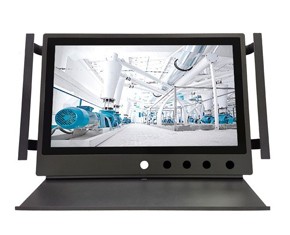Oct. 12, 2024
Portable LED screens have become a staple for events, presentations, and even personal use due to their versatility and high-quality displays. These screens provide sharp visuals and easy mobility, making them ideal for a variety of environments. However, with so many options available, choosing the right portable LED screen can be a daunting task. In this guide, we’ll explore the essential factors to consider when selecting the perfect portable LED screen for your needs.
The resolution of a portable LED screen plays a crucial role in determining the clarity of the visuals. Higher resolutions provide more detailed and crisp images, making them ideal for presentations, advertisements, and media-rich environments. Common resolutions range from HD (720p) to 4K (2160p), with Full HD (1080p) being a popular choice for most applications.
When choosing a resolution, it’s essential to consider the viewing distance. For close-up viewing, higher resolutions like 4K ensure that the image remains sharp, while for distant viewing, HD or Full HD may suffice. Ensure you balance the resolution with the size of the screen to get the best visual experience.
Portable LED screens come in a wide range of sizes, from compact 10-inch displays to large 100-inch panels. The right size for you depends on your intended use and the space available. For small meetings or presentations in confined spaces, a screen size between 20 to 30 inches may be suitable. However, for larger events or outdoor displays, a screen over 50 inches may be necessary.
Additionally, consider how portable you need the screen to be. Larger screens may offer better visibility, but they can be more challenging to transport and set up. Smaller screens, on the other hand, are easier to move but may not provide the same visual impact in larger spaces.
The brightness of a portable LED screen is measured in nits, and it determines how well the screen can be seen in different lighting conditions. If you plan to use the screen outdoors or in brightly lit rooms, you'll need a screen with higher brightness levels. A brightness rating of at least 500 nits is ideal for outdoor use, while indoor settings can often work well with around 300 nits.
Choosing a screen with adjustable brightness settings is also a good idea, as it allows you to optimize the display for various environments. This flexibility ensures that your content is visible and vibrant, no matter where the screen is used.
Portable LED screens should offer a variety of connectivity options to support different media sources. HDMI, USB, and VGA inputs are standard and allow you to connect the screen to laptops, DVD players, cameras, and other devices. Wireless connectivity options such as Wi-Fi or Bluetooth can also enhance flexibility, enabling you to stream content directly from your smartphone or computer without the need for cables.
Consider your usage scenarios when evaluating connectivity options. For instance, if you frequently switch between devices or use streaming services, a screen with built-in wireless capabilities may save you time and hassle.
Since portable LED screens are designed for mobility, they must be durable enough to withstand frequent transportation and setup. Look for models with sturdy frames and protective casing to prevent damage during transit. Water-resistant or weatherproof models are also essential if you plan to use the screen outdoors.
In addition, consider the lifespan of the LED components. High-quality LED screens can last for many years, even with heavy use, but cheaper models may degrade more quickly, resulting in dimmer displays over time. Opt for a screen that offers a good balance between portability and long-term reliability.
A key advantage of portable LED screens is their ease of setup. Many models come with foldable stands, built-in handles, or compact designs that make them easy to transport and install. Some screens also offer plug-and-play functionality, allowing you to quickly connect your devices without the need for complicated configurations.
If you plan to move your screen frequently or set it up in different locations, ease of setup should be a top priority. Look for features such as quick-release mounts, lightweight construction, and user-friendly controls to ensure that your screen is easy to handle.
Q: What is the best resolution for a portable LED screen?
A: The best resolution depends on the intended use and viewing distance. For close-up presentations or media-heavy applications, Full HD (1080p) or 4K is recommended for sharp visuals. For more general use, HD (720p) may suffice, especially for larger screens viewed from a distance.
Q: Can portable LED screens be used outdoors?
A: Yes, many portable LED screens are designed for outdoor use. However, you'll need a screen with higher brightness levels (500 nits or more) to ensure visibility in direct sunlight. Weatherproofing and durability features are also essential for outdoor environments.
Q: How long do portable LED screens typically last?
A: High-quality portable LED screens can last for many years, with an average lifespan of 50,000 to 100,000 hours. The longevity depends on the build quality, the brightness of the LEDs, and how frequently the screen is used.
Q: Can I connect a portable LED screen to my smartphone?
A: Yes, many portable LED screens offer wireless connectivity options, such as Wi-Fi or Bluetooth, that allow you to stream content from your smartphone. Alternatively, you can use an HDMI or USB cable to connect directly.
Choosing the perfect portable LED screen involves considering several factors, including screen resolution, size, brightness, connectivity, durability, and ease of setup. By evaluating your specific needs and preferences, you can find a portable LED screen that delivers an exceptional visual experience, whether you’re hosting an outdoor event, giving a presentation, or enjoying media at home. Make sure to invest in a screen that offers the right balance of performance and convenience to enhance your viewing experience wherever you go.



Capacitive Vs Resistive Touch Screens: When to Choose?
Mar. 14, 2025

How to Choose Capacitive Touch Monitors
Dec. 27, 2024